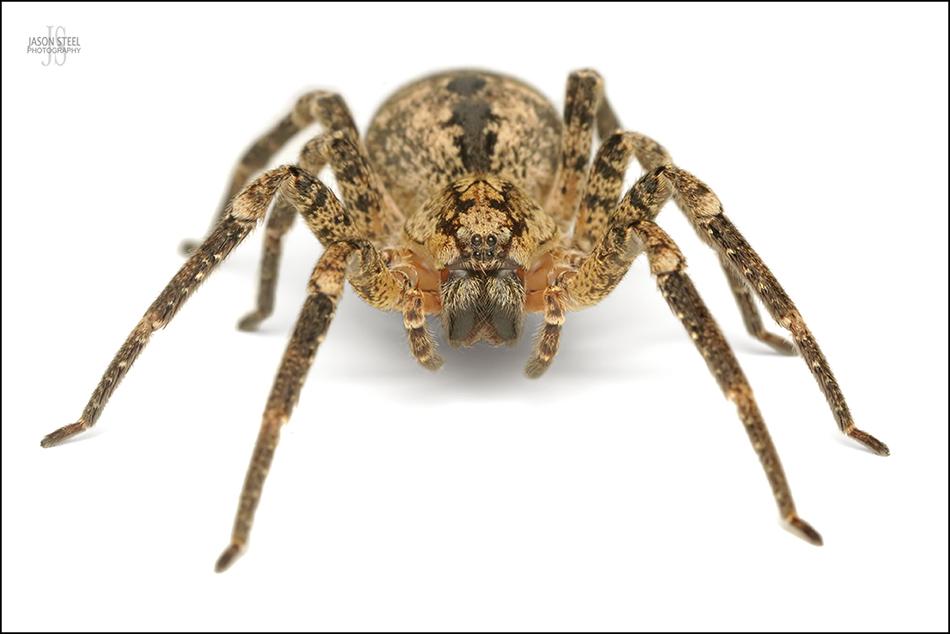
24mm adult female Zoropsis spinimana, found in a residential house in Southwark, SE London, 24th March 2025.
False Wolf Spider / Mediterranean Spiny False Wolf Spider / Mediterranean House Spider - (Zoropsis spinimana)
The False Wolf Spider is a recently introduced species to the UK. It was first discovered to be established in the UK in garages in SW London back in 2012. There was also a record of one specimen found in 2008. The False Wolf Spider originated from its native Mediterranean countries including Italy, Spain and parts of northern Africa. Around the same time that it appeared in the UK it was also starting to appear in other European countries including France, Germany and Switzerland. It began turning up in North America slightly earlier, with records in California first being noted as early as 1992. This species was accepted as being established in San Francisco in 1995. - LINK LINK 2
Zoropsis spinimana spreads at an astonishing rate. In Switzerland, following the first record of Zoropsis spinimana, this spider had spread to almost every city in the country in less than 20 years. - LINK
In the UK most records come from north London, where the species is widely established, but as of 2025 records are now becoming increasingly common from across much of England as Zoropsis spinimana continues to spread further north both in Britain and other parts of the world. - LINK
Zoropsis spinimana does not build a web to catch its prey, neither does it use any silk to wrap or subdue its prey either. Instead this spider actively seeks out and slowly stalks other invertebrates to prey upon, and uses its size and strength to overpower its victims. The forelegs of Zoropsis spinimana are equipped with numerous robust, erectile leg-spines. These leg-spines usually point in the roughly the same direction as the limb they are attached to, but the erectile leg-spines can be rapidly erect at an angle of around 90 degrees to the legs in an instant. Spiders use a hydraulic system to operate their limbs, and rely on a fluid called hemolymph to extend their legs, as they completely lack muscles that can directly extend or contract their limbs. An increase in pressure of the hemolymph enables the leg-spines to rapidly become erect. These robust erectile leg-spines are extremely useful when the spider grabs hold of its prey and make it almost impossible for the prey to break away and escape the spider's grasp. It is the presence of these leg-spines that give rise to the later part of the spider's binominal name, "spinimana. These leg-spines are also the reason why Zoropsis spinimana is sometimes referred to as the Mediterranean Spiny False Wolf Spider.
In the UK Zoropsis spinimana is probably an exclusively synanthropic species, and is sometimes known as the Mediterranean House Spider. Zoropsis spinimana are most often seen at night as this nocturnal hunter slowly patrols the internal walls of buildings, garages and sheds. There are also some records of this species being found on the outside walls of buildings too. Cannibalism can occur in habitats that exhibit a high density of this species, or where other prey is scarce. - LINK
Zoropsis spinimana are a largely crepuscular species and hunt mainly at dusk and dawn. They can be active all through the night but strongly avoid sunlight and strong artificial light. They are most often discovered in houses either when a person enters a dark room, and turns on a light, or when the person moves furniture, or other large objects, where the spider is hiding behind.
In parts of Europe Zoropsis spinimana can be known as the Garage Spider. In its native Mediterranean range Zoropsis spinimana is also usually found in either buildings, out-buildings, or in the close vicinity to buildings. In the Mediterranean Zoropsis spinimana is not entirely synanthropic though and it can also be found in forest areas, sheltering behind loose tree bark, and in rocky areas, under large stones. - LINK. It is likely that this sudden human-mediated expansion of Zoropsis spinimana's range, and its sudden shift to becoming a largely synanthropic species, could be a response to climate change, but is probably driven by a rapid evolutionary adaptation, as we have seen with other arachnid species such as Steatoda nobilis and Latrodectus geometricus.
In Germany Zoropsis spinimana is commonly known as the Nosferatu Spider. A name inspired by the markings on the spider's carapace, that some claim resemble the vampire, Count Orlok, from the 1922 German movie Nosferatu.
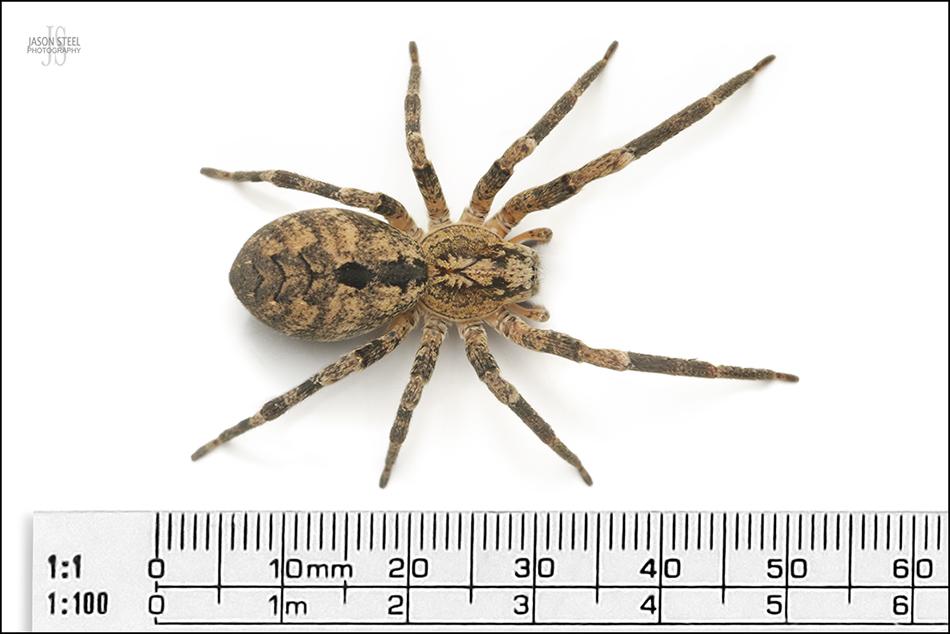
24mm adult female Zoropsis spinimana, found in a residential house in Southwark, SE London, 24th March 2025.
Zoropsis spinimana is a large and robust spider by UK standards, with males typically reaching a body-length of 10-12mm, and females typically reaching around 15-19mm in body-length. Females typically have a leg-span of around 45mm or more. The slightly smaller, but longer legged males usually have a leg-span of 50-60mm. Some specimens can grow larger than these lengths. I'd like to give very grateful thanks to Elizabeth Price, who kindly captured, and allowed me to collect the Zoropsis spinimana pictured above. This was the second Zoropsis spinimana that had been found in Elizabeth's residential home in Southwark, in SE London: - LINK. This was a particularly large adult female specimen, with a body-length of 24mm and a leg-span of 60mm. There have been a couple of photos, recently shared on Facebook, of large male Zoropsis spinimana, with leg-spans exceeding 60mm. Here's one specimen from Uxbridge, in West London: - LINK. The second specimen was one of many at a residential home in Enfield, north London: - LINK. As seen in these photos Zoropsis spinimana specimens found in the UK range from a light tan to brown in colour, or sometimes light grey. Zoropsis spinimana can also be found in a reddish-brown colour too.
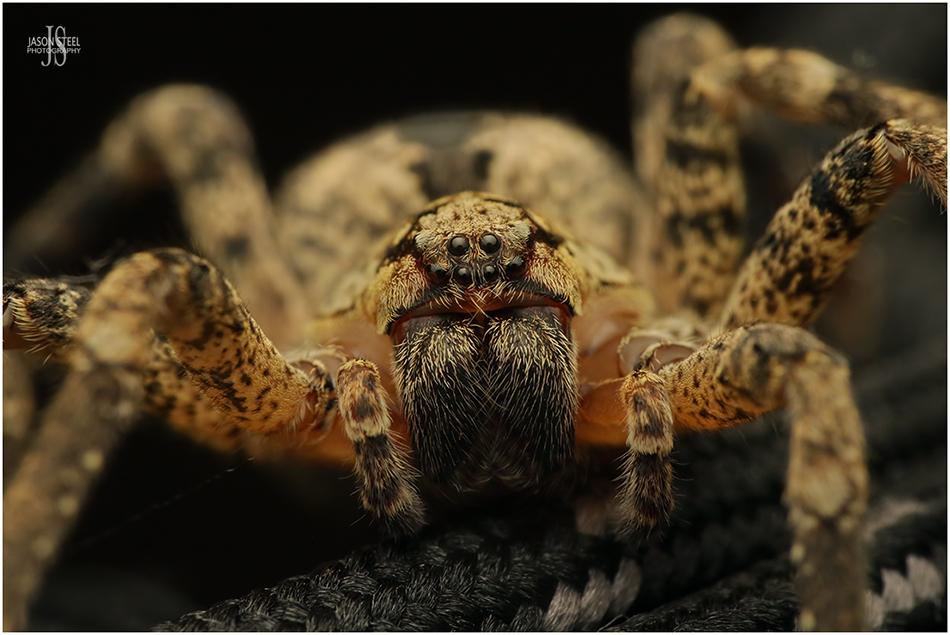
24mm adult female Zoropsis spinimana, found in a residential house in Southwark, SE London, 24th March 2025.
So why is it called the False Wolf Spider?
This large hunting species looks very similar in appearance to a Wolf Spider, from the family Lycosidae, but Zoropsis spinimana comes from the family Zoropsidae. Zoropsis spinimana is the only representative of this family found in the UK and members of this family can be distinguished from true Wolf Spiders by looking closely at their eye arrangements. Zoropsis eyes are restricted to near the front edge of the cephalothorax, whereas on wolf spiders the eyes are spread across the front third of the cephalothorax. Wolf Spiders have two large prominent posterior median eyes, which are far larger than any of their other six eyes. Zoropsis species also have 8 eyes, positioned in two rows that curve slightly inwards. All 8 of Zoropsis eyes are very similar in size, and none are as large as the PM eyes of the Wolf Spider.
The False Wolf spider can also be distinguished from Wolf Spiders by its hunting techniques too. Wolf Spiders rely on their sudden bursts of rapid speed and their agility to chase down and catch their prey, so they’re very fast moving spiders. The False Wolf Spider adopts a different approach. It moves much more slowly and relies on stealth to catch its prey. Zoropsis spinimana hunts by very slowly creeping up on its prey, and only showing any real speed when the prey is within range for the spider to launch an attack and grab hold of its victim.
Zoropsis species have well developed adhesive hairs, in dense hair tufts, found mainly on the tarsi and metatarsi of the front legs, known as scopulae. Their legs, particularly the front legs, also have well developed and specialised distal scopulae, known as claw tufts too. Wolf Spiders, of the family Lycosida, have scopulae but don't have the claw tufts. These claw tufts of adhesive hairs allow Zoropsis species to ascend very smooth and flat vertical surfaces such as interior walls and windows. The scopulae, which are found mainly on the tarsi and metatarsi of the front legs, are used in conjunction with their leg spines, for grasping hold of prey rather than climbing.
Zoropsis spinimana is representative of the Cribellate Spiders, as such they are equipped with both calamistrum and cribellum, structures that allow them to weave cribellate silk with a typical woolly structure. None of the true Wolf Spiders, Lycosidae, possess these organs, and cannot produce cribellate silk.
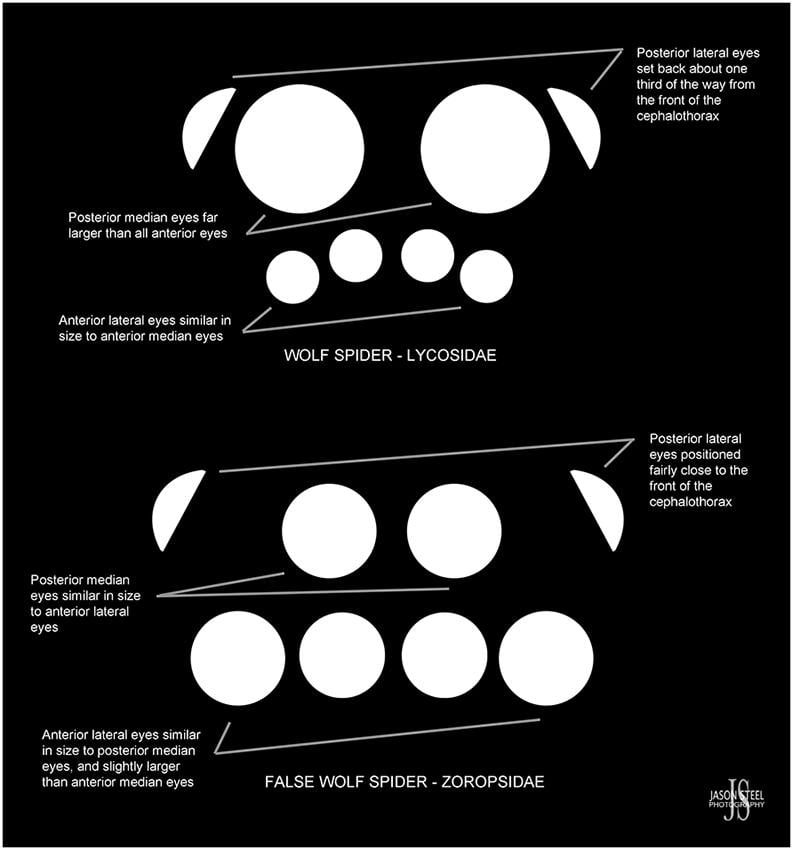
Comparison between the eye-arrangements of Lycosidae and Zoropsidae
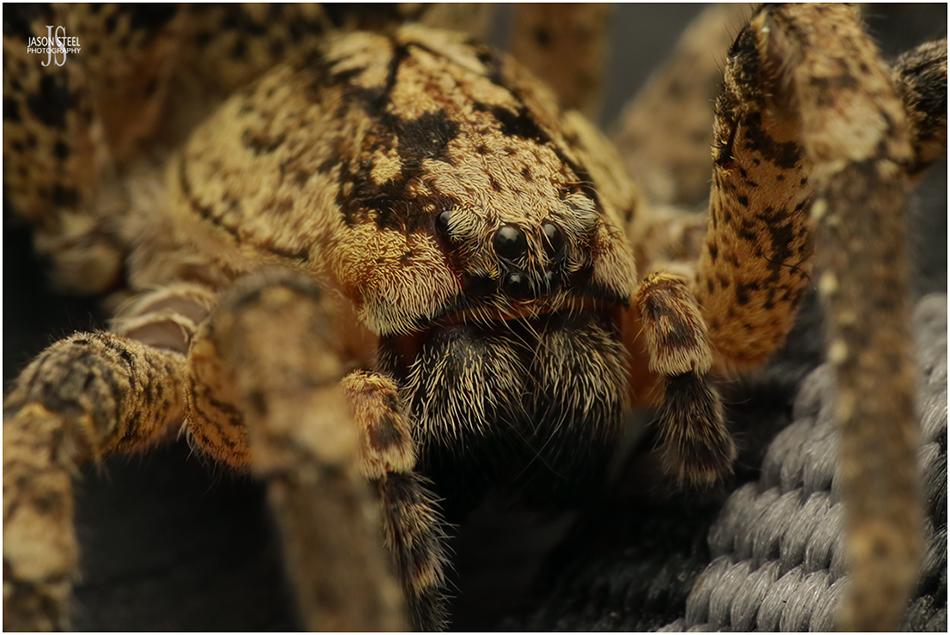
24mm adult female Zoropsis spinimana, found in a residential house in Southwark, SE London, 24th March 2025.
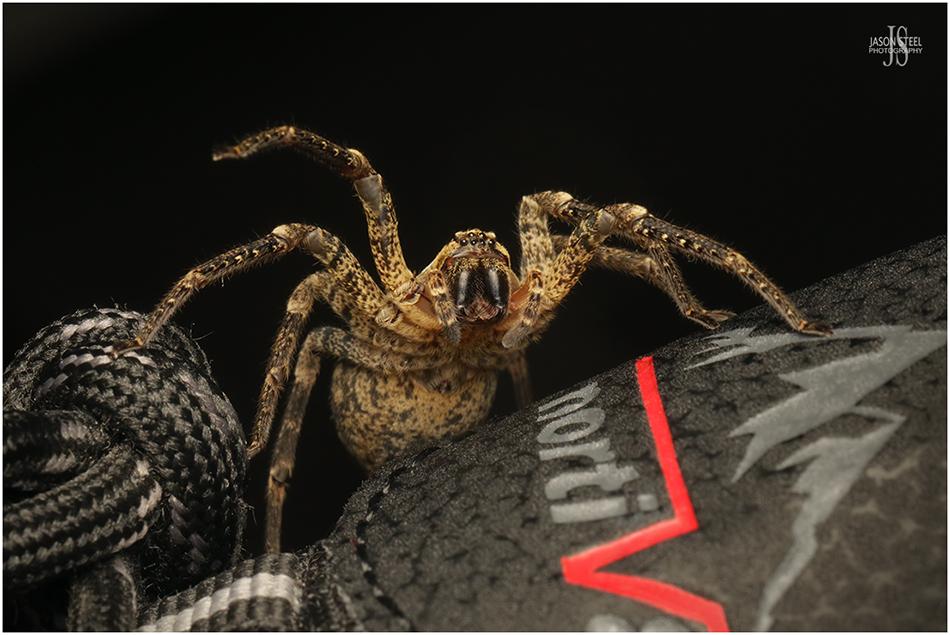
24mm adult female Zoropsis spinimana, found in a residential house in Southwark, SE London, 24th March 2025.
Are Zoropsis spinimana dangerous, and do they bite?
Zoropsis spinimana is typically a docile and slow moving species, and can usually be carefully handled without risk of incurring a bite. Bites when handling these spiders can happen though, and can on occasion be moderately painful too. The venom of Zoropsis spinimana is not dangerous to humans and has no serious or long-term effects. Bites can sometimes cause minor reddening and swelling, but such symptoms disappear within a few hours (Nentwig et al. 2013). Watch video of Zoropsis spinimana being handled here.
There don't seem to be any records or accounts online of humans being bitten by Zoropsis spinimana anywhere in the UK. However, on the 20th August 2024 amateur arachnologist, Shreyas Kuchibhotla, was bitten by a large 14mm sub-adult male Zoropsis spinimana, that he'd found in north London, and had taken into captivity to study. The spider was being gently encouraged to exit its containing pot so it could be photographed. Shreyas recalled that the spider showed rather "atypical behaviour. It walked out of the pot onto my finger and I suddenly felt a pricking sensation. The spider was not being squeezed or harassed in any way." Shreyas had previously interacted with several other Zoropsis spinimana specimens and none of them had ever exhibited any defensive behaviour at all. When I asked how painful the bite was Shreyas explained that the bite was "Not bad at all - just a little mild pain for a couple of hours, though I suspect the envenomation wasn’t as prolonged as it usually is since I reflexively brushed the spider off."
In Switzerland there were five recorded accounts of Zoropsis spinimana bites to humans during a two year study period between 2011 -2013, The bites were all from adult female specimens. Only minor symptoms of slight swelling and moderate pain were experienced, even in the case of a young child being bitten. (Nentwig et al. 2013). As part of the study two arachnologists allowed themselves to be deliberately bitten by Zoropsis spinimana. Both described the symptoms as slight swelling and pain “between a mosquito bite and bee sting”. But all symptoms disappeared very quickly.
With any venom there is always the small possibility of a systemic reaction from the human body. Although this is incredibly rare for most species there has been one known isolated case of a more severe reaction to a bite from Zoropsis spinimana. In 2018 a 76 year old man suffered a "slightly painful spider bite, into his left inner wrist, that occurred when the patient picked up a bag of peat on his balcony in Heidelberg." The spider was captured and identified as Zoropsis spinimana. The victim "suffered increasing local pain and swelling during the following hours and on the next day. After two days, the entire lower arm showed extensive edema and sharply demarcated erythema. Moreover, grouped serous blisters with a maximum diameter of 2 cm developed progressively proximal to the bite." The patient was admitted to hospital but "hemorrhages kept developing until the fifth day after the bite." It took a week before all symptoms subsided. - LINK
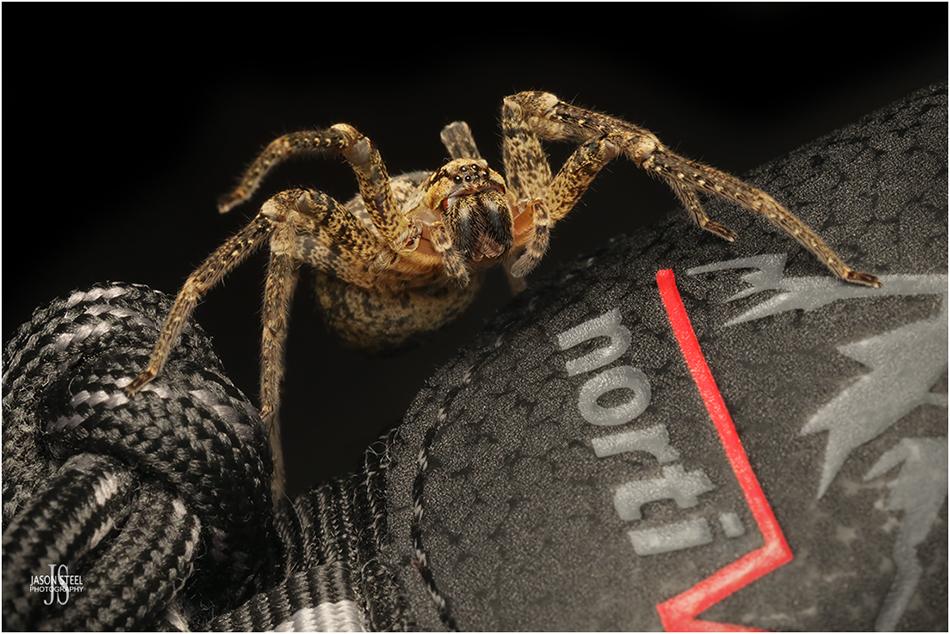
24mm adult female Zoropsis spinimana, found in a residential house in Southwark, SE London, 24th March 2025.
This huge gravid female Zoropsis spinimana seemed quite content to slowly explore my work boots. It made for some rather striking images. In Germany, where Zoropsis spinimana is also now well established, the most common months for these spiders to be observed wandering in houses are September, then August, and then October. - See page 4.
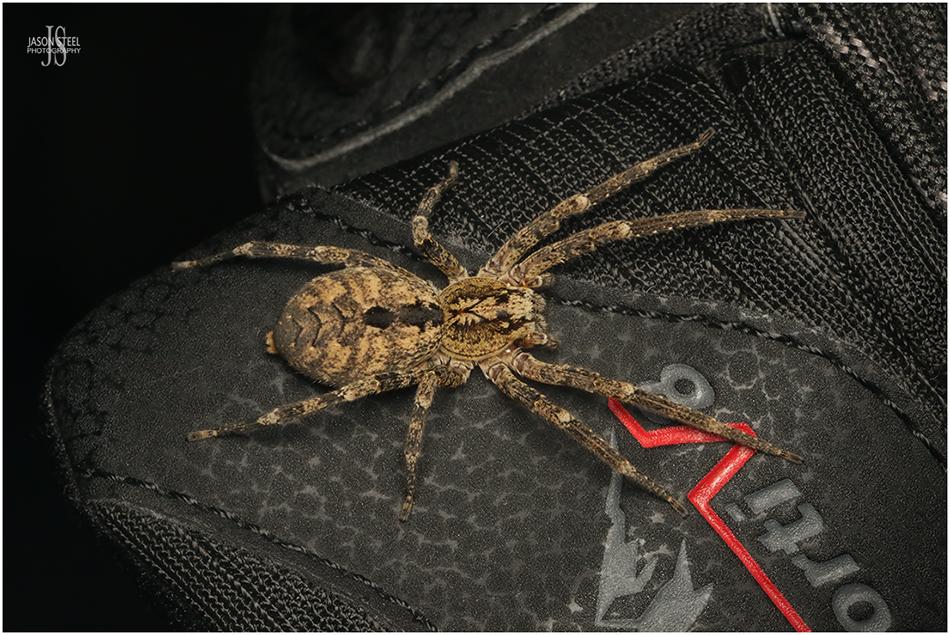
24mm adult female Zoropsis spinimana, found in a residential house in Southwark, SE London, 24th March 2025.
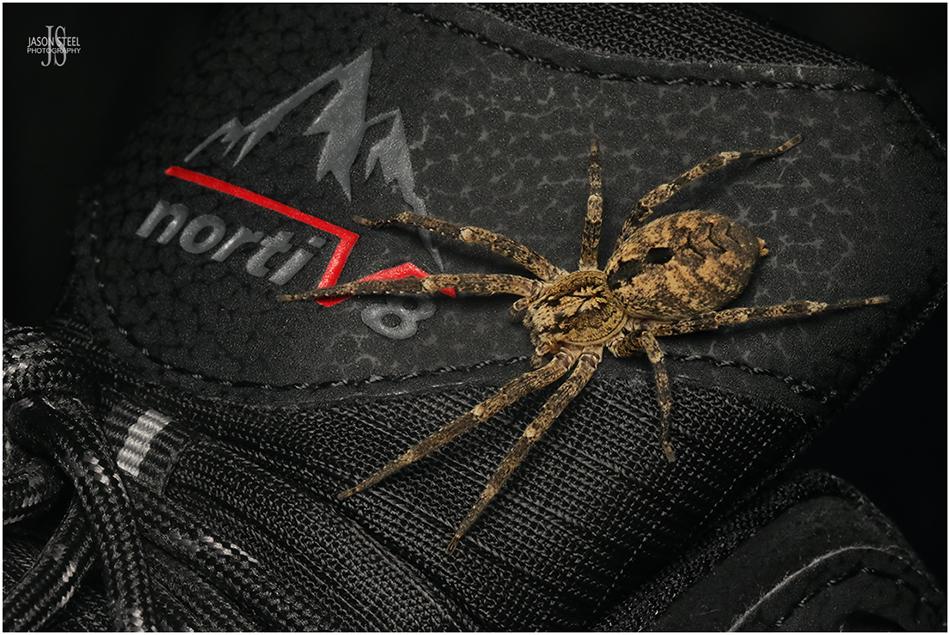
24mm adult female Zoropsis spinimana, found in a residential house in Southwark, SE London, 24th March 2025.
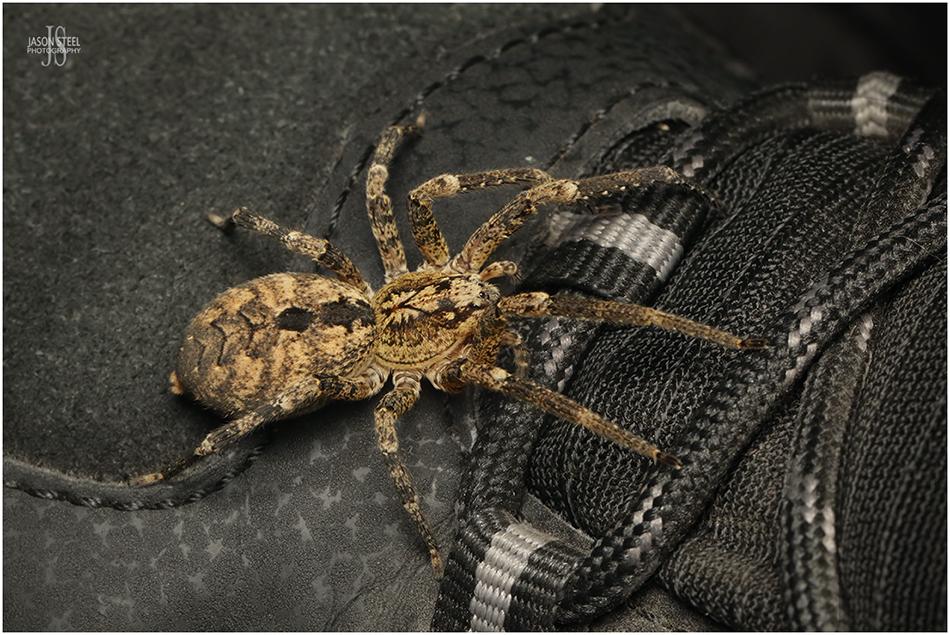
24mm adult female Zoropsis spinimana, found in a residential house in Southwark, SE London, 24th March 2025.

24mm adult female Zoropsis spinimana, found in a residential house in Southwark, SE London, 24th March 2025.
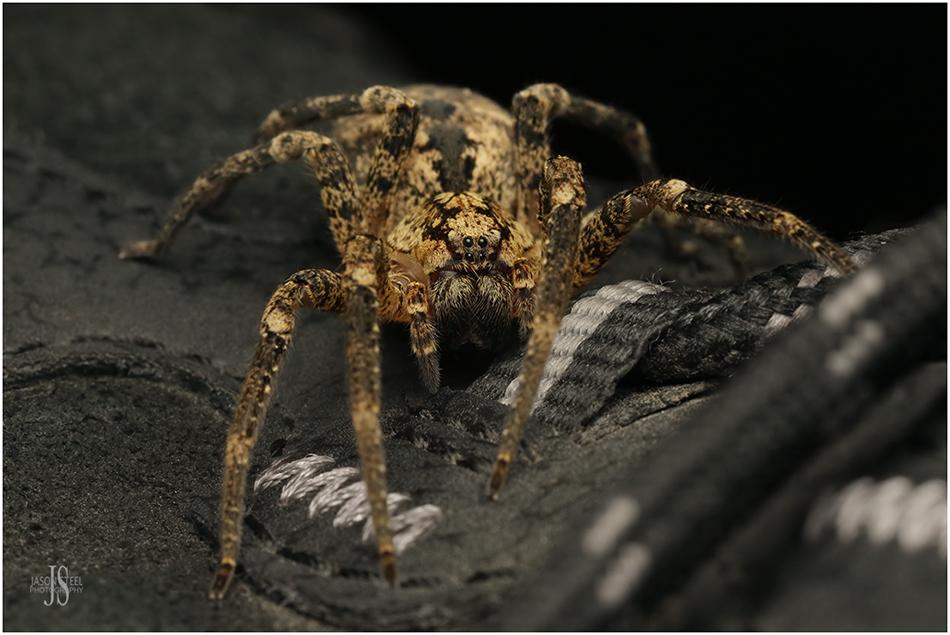
24mm adult female Zoropsis spinimana, found in a residential house in Southwark, SE London, 24th March 2025.
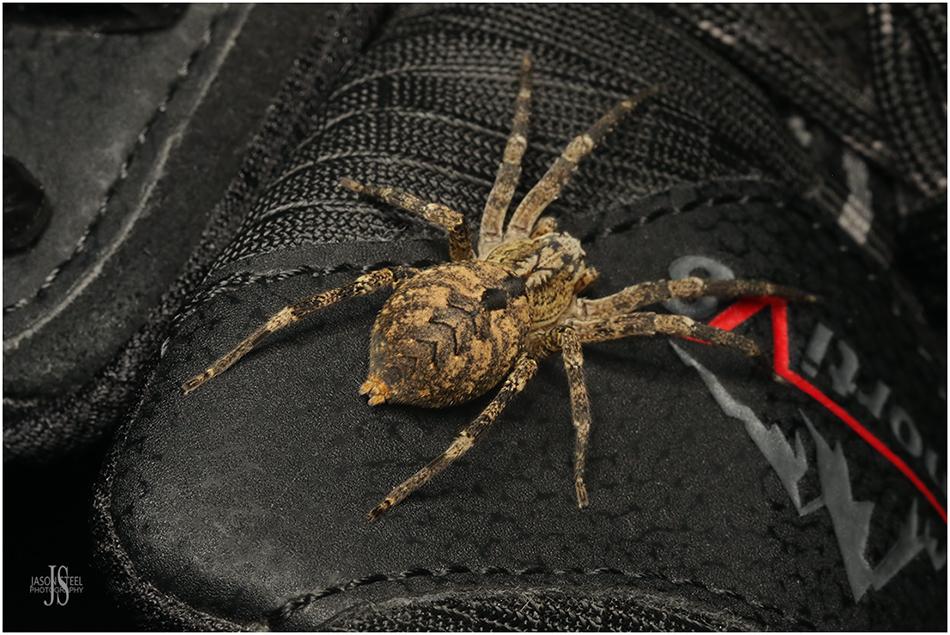
24mm adult female Zoropsis spinimana, found in a residential house in Southwark, SE London, 24th March 2025.

24mm adult female Zoropsis spinimana, found in a residential house in Southwark, SE London, 24th March 2025.
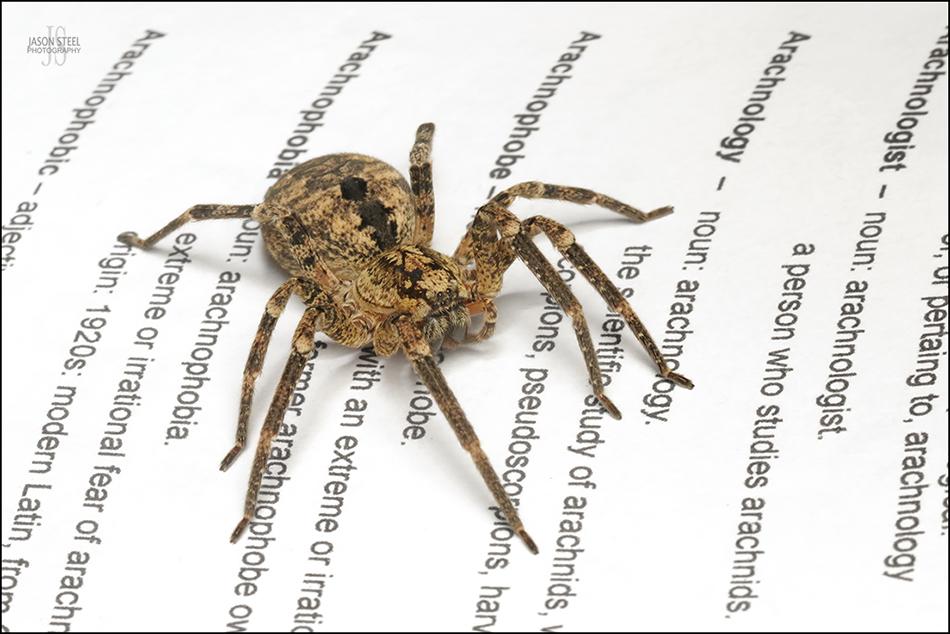
24mm adult female Zoropsis spinimana, found in a residential house in Southwark, SE London, 24th March 2025.
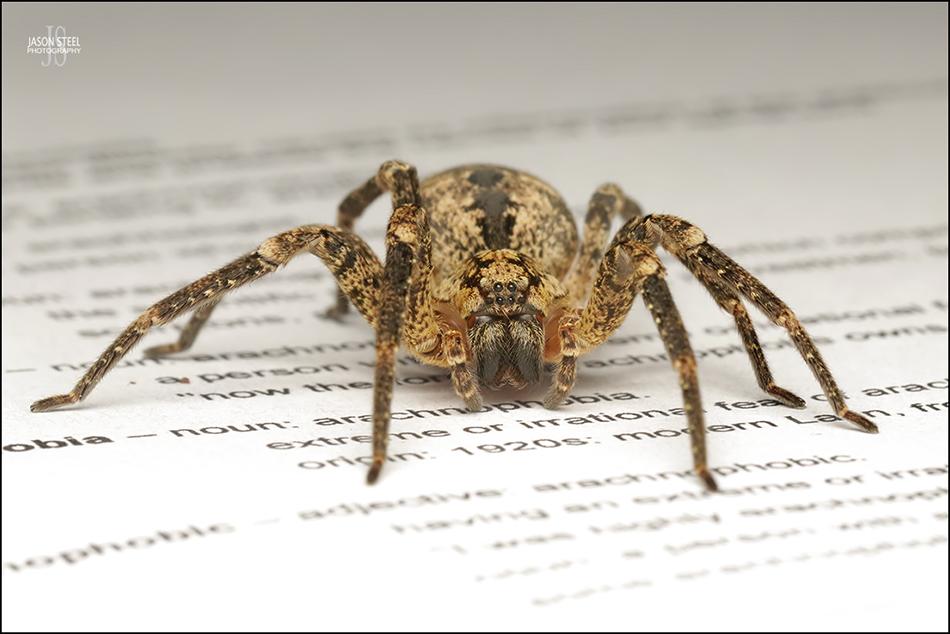
24mm adult female Zoropsis spinimana, found in a residential house in Southwark, SE London, 24th March 2025.
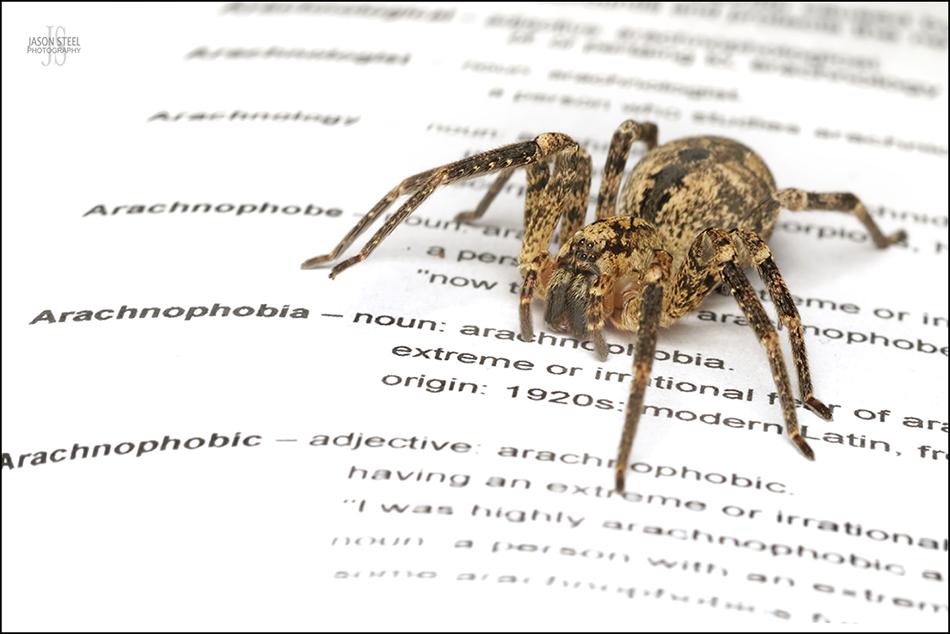
24mm adult female Zoropsis spinimana, found in a residential house in Southwark, SE London, 24th March 2025.
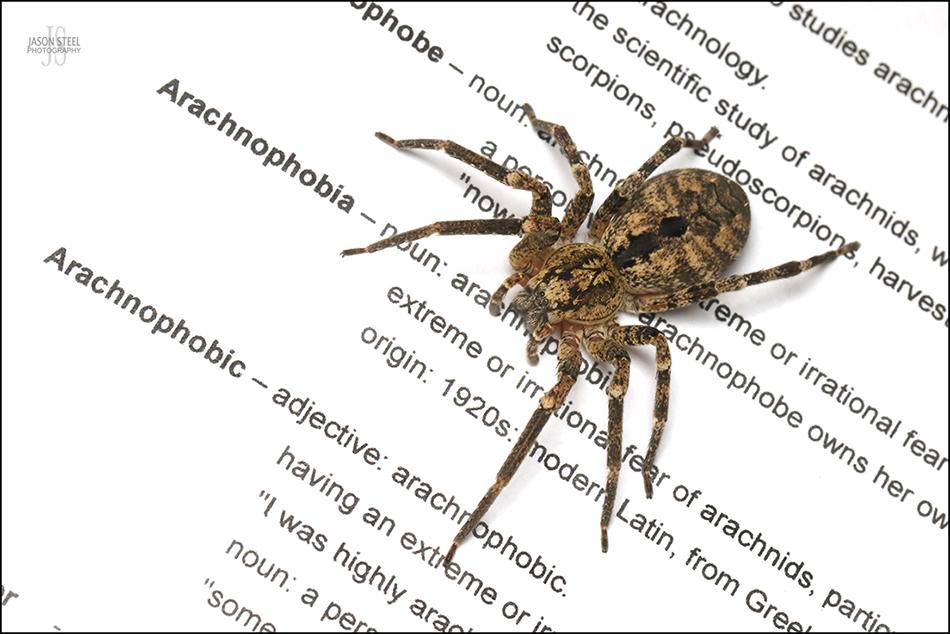
24mm adult female Zoropsis spinimana, found in a residential house in Southwark, SE London, 24th March 2025.
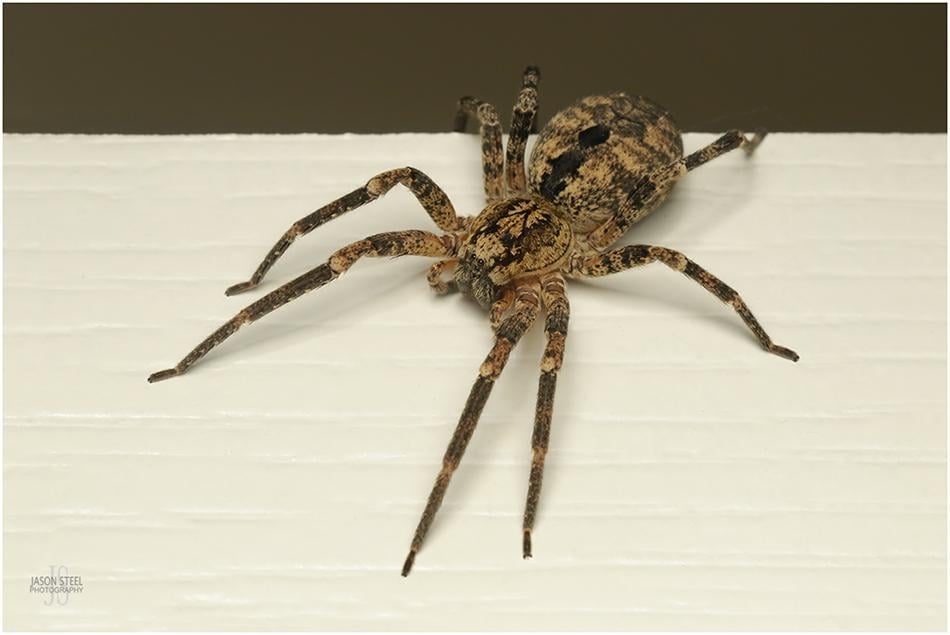
Adult female Zoropsis spinimana, found in a residential house in Southwark, SE London, 24th March 2025.
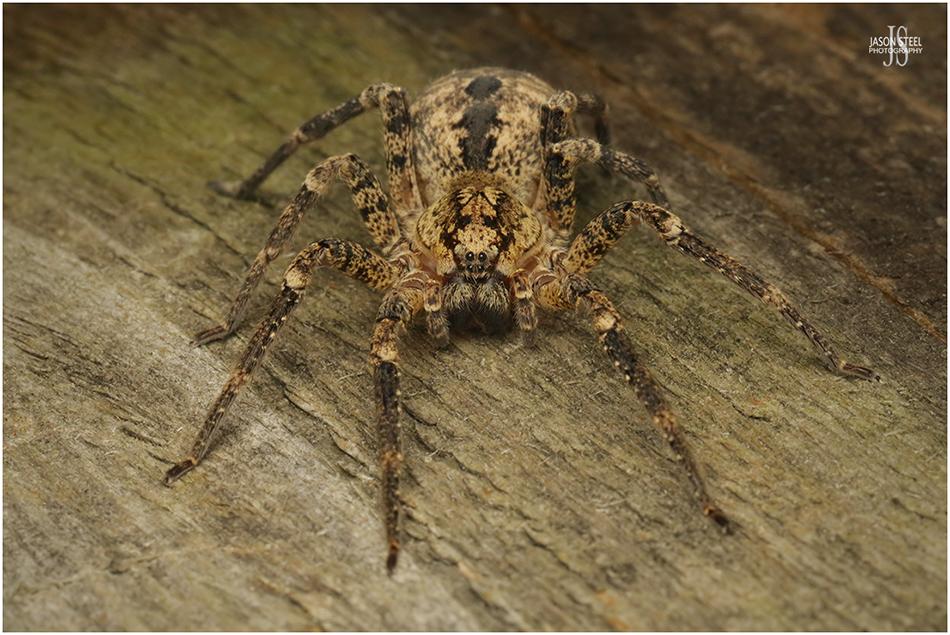
Adult female Zoropsis spinimana, on a residential garden fence March 2025.
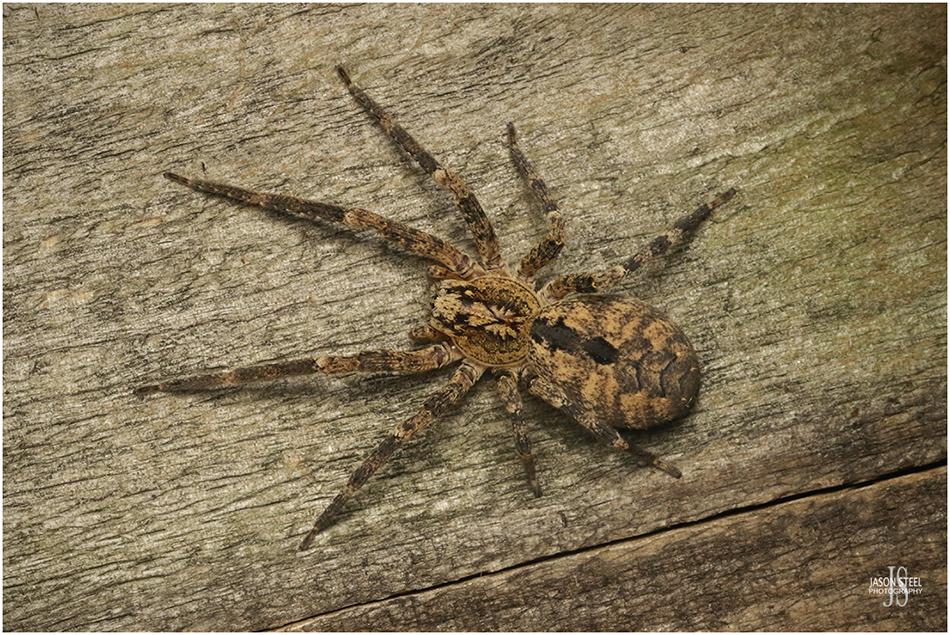
Adult female Zoropsis spinimana, on a residential garden fence March 2025.
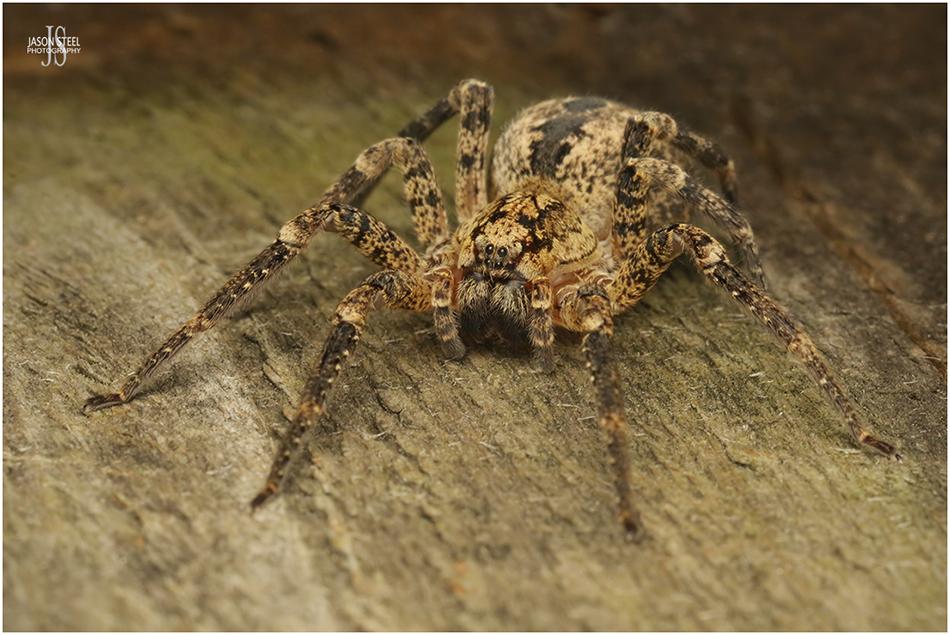
Adult female Zoropsis spinimana, on a residential garden fence March 2025.
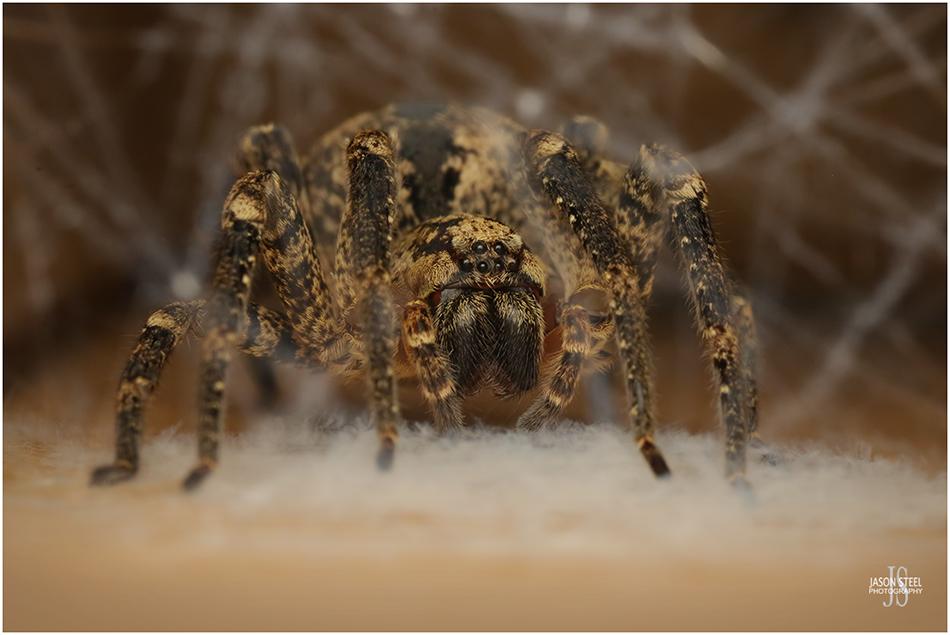
Gravid female Zoropsis spinimana in her brood chamber, laying the groundwork for her egg-sac / cocoon. 3rd April 2025.
Cribellate silk and Cocoon Construction.
Although Zoropsis spinimana does not use any silk to catch or wrap its prey it is still capable of producing cribellate silk, similar to that of the Lace Weavers, Amaurobius species. Conventional spiders produce their silk from their spinnerets. However, the cribellate silk is produced from the spider's cribellum, which are a pair of sieve-like plates located just in front of the spinnerets. Cribellate silk has a unique and distinctive woolly texture, that is caused by the extremely thin fibres. The cribellate silk is teased out by a row of curved bristles on the metatarsus of the fourth leg. This bristled structure is known as the calamistrum.
So what purpose does Zoropsis spinimana have for cribellate silk if it does build a web and it doesn't wrap its prey? Zoropsis spinimana does sometimes still produce silken safety lines, which it can leave behind as a trail when it's climbing up slippery surfaces. The main purpose Zoropsis spinimana has for its silk production is employed by gravid female specimens. Egg production typically occurs in the springtime. When the time is close for the gravid female to lay her eggs she will find herself a sheltered flat surface, often in a high corner of a room, garage or shed, and she will construct and lock herself away in a brood chamber. The brood shelter can also be built under rocks or behind loose bark. Many sources claim that once in her brood chamber she will never leave again and here she will stay for the remainder of her days. Often within a day or two of building the brood chamber the female will start producing her cocoon / egg-sac. She starts first by laying a circular woolly covering on the flat surface, typically of around 20-25mm in diameter. She will then deposit her eggs on this woolly circle of silk, before sealing them in with plenty more woolly cribellate silk laid over the top. Some female specimens may produce more than one cocoon. The egg-sac typically contains between 20-50 eggs.
The female will then stand guard over her cocoon and defend it against any potential threats from predators. The eggs usually hatch after about 4 weeks, but can take less in hot conditions, or considerably longer in cold conditions. The adult female will often perish before they emerge. If she is still alive once the spiderlings hatch then she will continue to stand guard over them. The female will eventually die, often at just over 2 years of age, and the young spiderlings typically disperse in late summer. The juvenile spiders overwinter and will then reach maturity in Autumn. Once the males reach maturity at around 14-15 months of age they seek out a mating partner. Once mating has taken place the male typically stops feeding and eventually perish at around 14-18 months of age. The mated adult females will overwinter for the second time in their life before constructing their own silken brood chamber in the spring and starting the lifecycle once again.
I have read an account from one keeper that in captivity an adult female Zoropsis spinimana lived for 2 years and 2 months, whilst her two male siblings lived for just 1 year and 3 months. - LINK. Unfortunately many online sources give incorrect information on the lifespan of Zoropsis spinimana, claiming that this species lives for just one year. It's simply not possible for such a large spider to reach maturity within such a short space of time, especially in a synanthropic environment where food is generally scarce. In eco-systems where food is abundant Zoropsis spinimana can be vivacious feeders and such specimens may mature quite quickly. In optimal environmental conditions Zoropsis spinimana is capable of reaching maturity between 160 and 200 days, although this is uncommon. Whilst the lifecycle detailed here is typical of the species adult Zoropsis spinimana, of both sexes, can on occasion be found all year round.
What I have observed myself does differ slightly from what is written elsewhere though. Read further down the page for notes on my own observations from keeping Zoropsis spinimana.
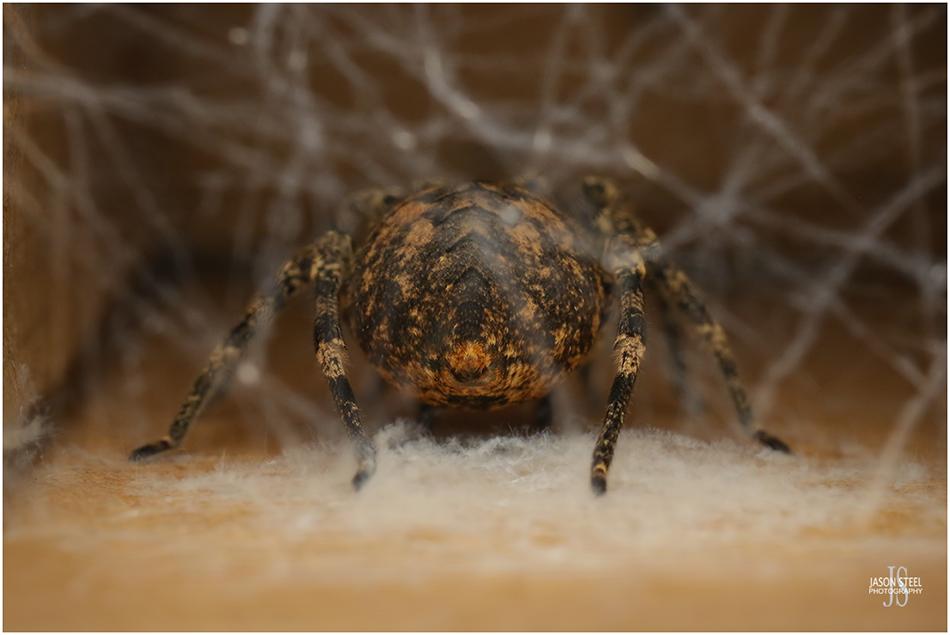
Gravid female Zoropsis spinimana in her brood chamber, laying the groundwork for her egg-sac / cocoon. 3rd April 2025.
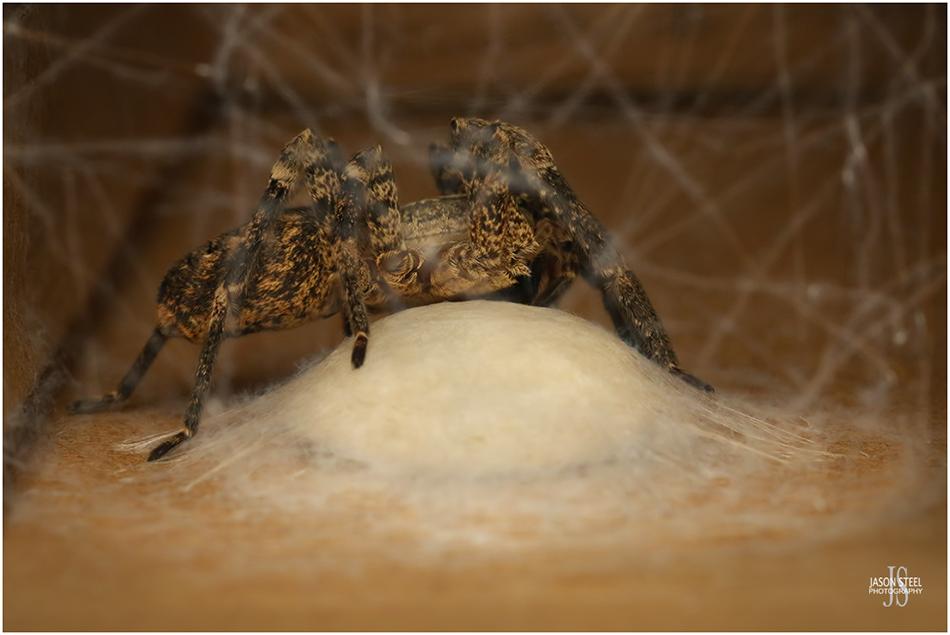
Gravid female Zoropsis spinimana in her brood chamber, standing guard over her egg-sac / cocoon. 4th April 2025.
Around 20 hours after the female first started laying the cribellate silk, that would form the base of her cocoon, the eggs were all laid and covered over with more silk. The female then stood guard on top of her egg-sac, looking considerably smaller and slimmer than she previously did when she was full of eggs.
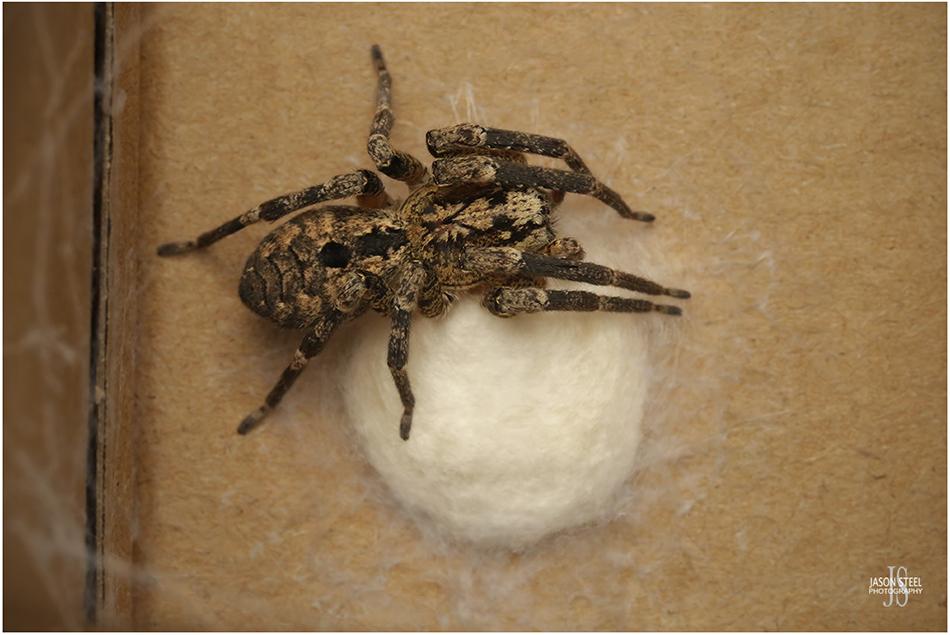
Gravid female Zoropsis spinimana in her brood chamber, standing guard over her egg-sac / cocoon. 4th April 2025.
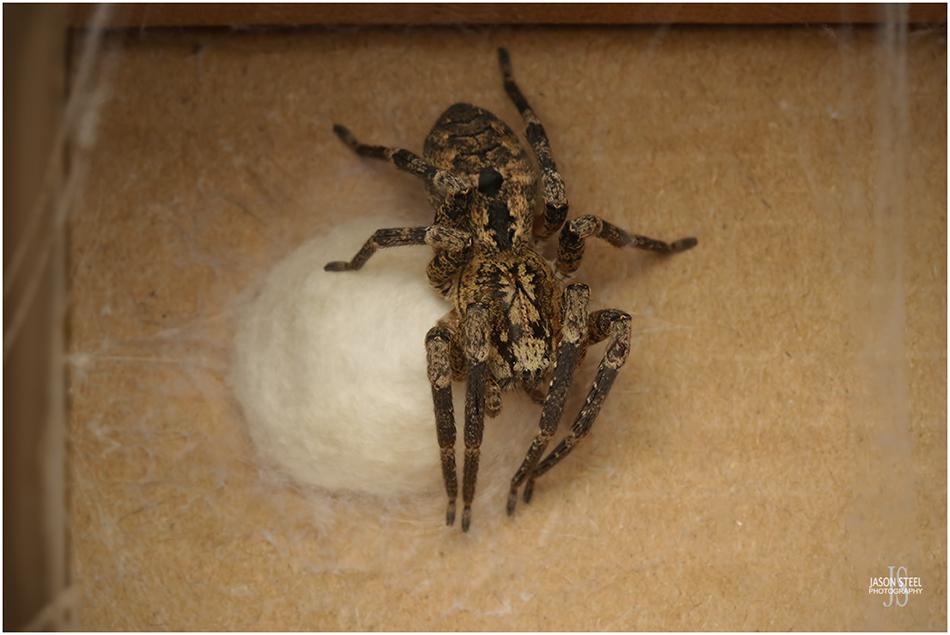
Gravid female Zoropsis spinimana in her brood chamber, standing guard over her egg-sac / cocoon. 4th April 2025.
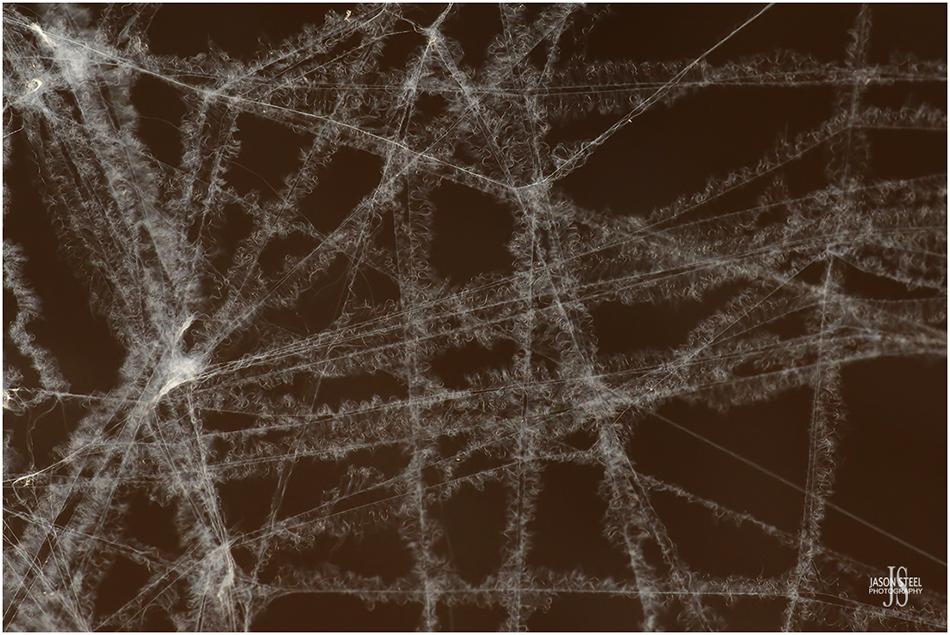
A close up look at the woolly cribellate silk used by Zoropsis spinimana to block the entrance to her brood chamber,
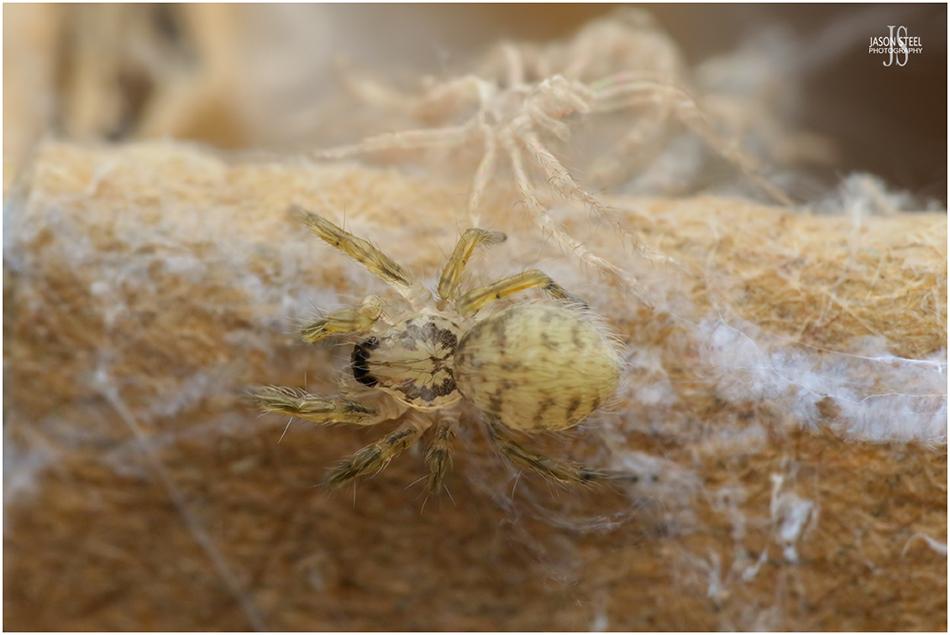
The 1 day old Zoropsis Spinimana spiderlings measured between 1.5 - 2mm in body-length. 22nd May 2025.
12th May 2025 - 6 weeks after the Zoropsis spinimana produced her egg-sac she then produced a second egg-sac within her brood chamber. Most sources claim that once a gravid female Zoropsis spinimana enters her brood chamber she will stay there for the rest of her days. The same sources claim that most females die before the eggs even hatch and that the adult female doesn't usually live long enough to see her offspring. Well this is not what I have witnessed myself. Once the time came the female locked herself away in her brood chamber, behind a wall of cribellate silk, and then produced her 1st egg-sac. She stood guard over the egg-sac for about a week before tearing a large hole in the silk that covered brood chamber and exiting the chamber. After that she spent most of the next 5 weeks sitting just outside of the brood chamber. She still readily hunted, fed and never turned down a meal. She only returned to the brood chamber after about 5 weeks. There she remained for another week until she produced her second egg-sac. During her second stay in the egg-sac she made no attempt this time to seal off the brood chamber. I am not alone in observing this behaviour either. Poly Victoros, from Enfield in north London, made the following comments that mirrored what I have observed myself. On the British Spider ID Group Poly wrote: "It’s curious because I’ve currently got two Zoropsis Spinimana egg-sacs in the garden shed, and both females stayed with their sac until about two weeks ago. They both made a hole in their dome and left. There are still no spiderlings. This has always happened in my observations: the mum leaves. Only once have I seen the mum stay with her spiderlings."
21st May 2025 - 7 weeks, or 39 days, after she had produced the first egg-sac, the spiderlings began to emerge and exit the brood chamber for the first time. Within 24 hours many of the spiderlings had already moulted. It was difficult to count exactly how many spiderlings there were as many of them hid within the cribellate silk of the brood chamber, and the tiny pale spiderlings were quite difficult to distinguish from all the old cast off exuvia. I would estimate that between 20-30 spiderlings had hatched.
In the evening the spiderlings had hidden themselves away again, back in the safety of the brood chamber. The adult female was then sitting outside of the brood chamber, at the top of the enclosure. For over an hour the female spider remained there, strumming her back legs. This strumming looked like it could be a form of communication, but if this was the case then who was she trying to communicate to, and what was she trying to communicate? Could this behaviour be stridulation, producing sounds outside of my audible frequency range? Or was she actually tugging at her web? Could she have been "telling her kids it’s time for bed"? Was she calling out for another male suitor? Was this behaviour a sign of stress, because she was trapped in the enclosure with her offspring? Or could this have been matriphagy that I was witnessing, and maybe she was trying to sacrifice herself by inducing a feeding response from the spiderlings? These questions were asked in the British Spider ID Group on Facebook. A couple of knowledgeable folk in the group believed that the strumming of her back legs was just typical behaviour of a cribellate spider producing her fluffy cribellate silk. Whilst this does sound very plausible it didn't explain why the spider was doing this for over an hour and yet the next day when I checked the enclosure there were no signs of any additional silk around the brood chamber, or anywhere else in the enclosure. - See video here.
The forelegs of Zoropsis spinimana are equipped with numerous robust, erectile leg-spines, which give the species its full common name, the Spiny Mediterranean False Wolf Spider. These leg-spines usually point in the roughly the same direction as the limb they are attached to and are not clearly visible. The leg-spines can be erected to stand at 90 degrees to the legs in an instant, to help the spider grasp hold of its prey. It's interesting to observe that the leg-spines on the top half of the newly emerged spiderling's legs seem to be in a permanently erect state, and are clearly visible.
24th May 2025 - Within just a few days of the spiderlings exiting their mother's brood chamber all of them had managed to escape from their enclosure and had dispersed into my home. Luckily the majority of the spiderlings all headed towards the nearest window and were recaptured. Adult Cave Spiders, Meta species, are negatively phototaxic so they seek out dark, undisturbed habitats, such as caves, tunnels, large hollow trees, sewage systems etc. The juveniles are the opposite though and they’re positively phototaxic. They’re programmed to be attracted to light as it causes them to disperse and find new habitats. The same is probably true of Zoropsis spinimana too. Whilst the adults hide themselves away during the daytime the young spiderlings are definitely drawn towards the light as most of the escaped spiderlings all headed towards the nearest window in the house where the sunlight was shining through.
10th June 2025 - 10 weeks after the adult female produced her first egg-sac she produced a third egg-sac. The third egg-sac was slightly smaller than the previous two and was attached to the top surface of her enclosure.
The young spiderlings that hatched from the first egg-sac quickly learned to hunt for themselves. I began raising three specimens individually in small pots. They weren't particularly fussy feeders either. I was able to feed them with small flies, gnats, tiny beetles and juvenile leafhoppers from my garden. One prey item all three specimens seemed to ignore were greenflies, and yet they readily hunted black flies of the same size.
20th June 2025 - After 38 days the spiderlings emerged from the second egg-sac.
5th July 2025 - After a very hot June and July the spiderlings emerged from the third egg-sac after just 26 days. The temperature clearly has a dramatic effect on the rate at which the eggs develop and hatch.
12th July 2025 - One week after the spiderlings emerged from the third egg-sac they started to disperse and escape from the enclosure. Even at just 7 days old the spiderlings were already very fast and very agile, and were difficult to catch. The adult female was still healthy and well and feeding on any prey offered to her.
23rd August 2025 - The adult female Zoropsis spinimana lost interest in food for two weeks, and lost considerable size and weight, before finally dying of old aged, three and a half months after producing her first egg-sac.
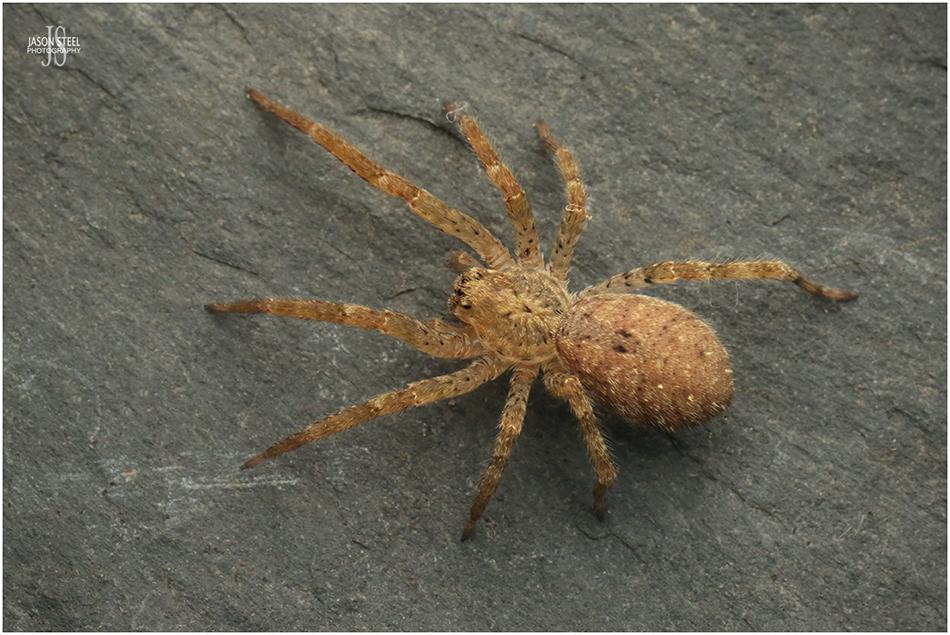
14 week old, 8mm juvenile False Wolf Spider, 9th September 2025.

14 week old, 8mm juvenile False Wolf Spider, 9th September 2025.
All Photographs on this page were taken using the Canon 7D mkii camera, the Canon 100mm Macro 2.8L IS lens, Canon 580 ex flash and MK Diffuser.
Some photos were taken with the addition of the Rayox 250 macro adapter.